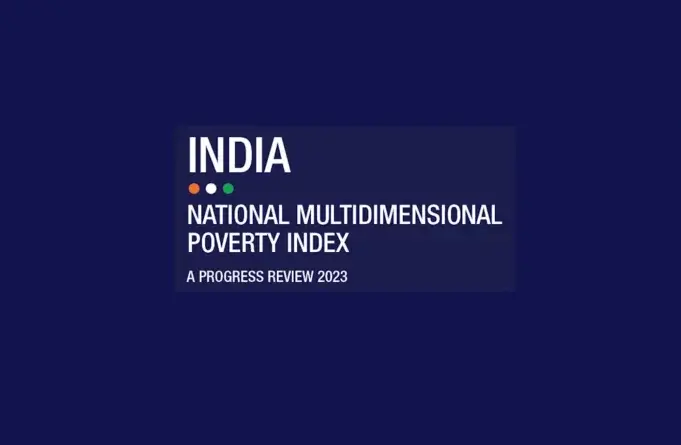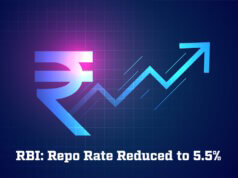In a remarkable achievement, a staggering 13.5 crore Indians have been successfully lifted out of multidimensional poverty within a span of five years. This noteworthy progress was revealed in the ‘National Multidimensional Poverty Index: A Progress Review 2023’ report, released on 17 July 2023 by Shri Suman Bery, Vice-Chairman of NITI Aayog.
This report, based on the latest National Family Health Survey (NFHS-5, 2019-21), represents India’s advancements in combating multidimensional poverty between the previous survey (NFHS-4, 2015-16) and the most recent one. The methodology employed aligns with global standards and builds upon the Baseline Report of India’s National MPI, which was launched in November 2021.
The National MPI measures multiple deprivations across three equally weighted dimensions: health, education, and standard of living. These dimensions are represented by 12 indicators aligned with the Sustainable Development Goals (SDGs). These indicators encompass nutrition, child and adolescent mortality, maternal health, years of schooling, school attendance, cooking fuel, sanitation, drinking water, electricity, housing, assets, and bank accounts. As per the report, all 12 indicators have witnessed significant improvements.
The report highlights a substantial decline of 9.89 percentage points in the number of multi-dimensionally poor individuals in India, dropping from 24.85 percent in 2015-16 to 14.96 percent in 2019-2021. Notably, rural areas experienced the most rapid reduction in poverty, declining from 32.59 percent to 19.28 percent. In urban areas, poverty also decreased from 8.65 percent to 5.27 percent. Uttar Pradesh recorded the largest decline in the number of poor individuals, with 3.43 crore people successfully escaping multidimensional poverty. The report provides multi-dimensional poverty estimates for all 36 states, union territories, and 707 administrative districts, identifying Uttar Pradesh, Bihar, Madhya Pradesh, Odisha, and Rajasthan as the states with the fastest reduction in the proportion of multi-dimensional poverty.
During the period from 2015-16 to 2019-21, the MPI value nearly halved, decreasing from 0.117 to 0.066. Additionally, the intensity of poverty decreased from 47 percent to 44 percent, positioning India well on track to achieve SDG Target 1.2 (reducing multi-dimensional poverty by at least half) well ahead of the scheduled timeline of 2030. This progress underscores the government’s strategic focus on sustainable and equitable development and its commitment to eradicating poverty.
The government’s dedicated efforts to improve access to sanitation, nutrition, cooking fuel, financial inclusion, drinking water, and electricity have yielded significant advancements in these areas. All 12 parameters of the MPI have shown substantial improvements. Flagship programs such as Poshan Abhiyan and Anaemia Mukt Bharat have contributed to reduced health deprivations. Initiatives like the Swachh Bharat Mission (SBM) and Jal Jeevan Mission (JJM) have successfully improved sanitation across the country. The provision of subsidized cooking fuel through the Pradhan Mantri Ujjwala Yojana (PMUY) has positively transformed lives, resulting in improved cooking fuel accessibility. Furthermore, initiatives such as Saubhagya, Pradhan Mantri Awas Yojana (PMAY), Pradhan Mantri Jan Dhan Yojana (PMJDY), and Samagra Shiksha have played significant roles in reducing multidimensional poverty in the country. The notable progress achieved, particularly in areas such as electricity, access to bank accounts, and drinking water, reflects the government’s unwavering commitment to improving the lives of citizens and creating a brighter future for all. The consistent implementation of diverse programs and initiatives with strong inter-linkages has led to a substantial reduction in deprivations across multiple indicators.
The findings from the second edition of the National MPI will serve as a valuable resource for states and union territories to identify and amplify the actions that have spurred progress since the Baseline Report. The insights provided in the report will aid in tracking the progress of vulnerable hotspots and pinpointing areas that require further targeted policy interventions and programmatic action.











